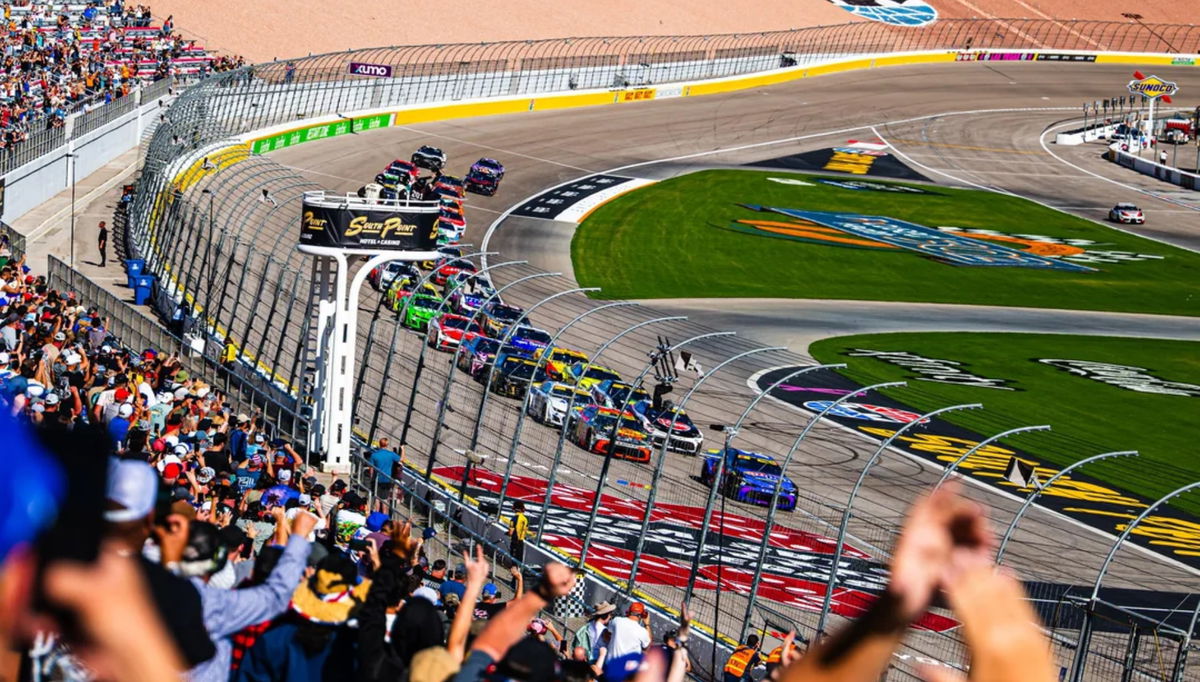
Imago
via Reddit

Imago
via Reddit
A time not so long ago, watching the race meant a shared experience, either crammed around a static television or huddled with a handheld scanner at the track. For decades, NASCAR was a relatively straightforward affair for the home viewer, primarily distributed through major networks and cable packages like CBS, ABC, and later ESPN, with all 500-mile events live since 1979. This single model offered a consistent way to catch the action, with in-car cameras in select cars being a groundbreaking feature, a novel view that was introduced as far back as the 1979 Daytona 500 telecast.
Watch What’s Trending Now!
The modern era, however, has fractured this uniformity, replacing the familiar bundle with a disorienting menu of digital platforms, notably driven by NASCAR’s new media rights deal with partners like Amazon Prime Video and TNT Sports, starting in 2025. While this shift has brought technological leaps like the 2022 rollout of every car having an in-car camera feed viewable on the free NASCAR Drive app, and Prime Video’s use of a real-time ‘Burn Bar’ fuel graphic, it has fundamentally changed the transaction with the new convenience tied to a new cost.
The streaming wars have once again impacted the world of motorsports, with Warner Bros. Discovery announcing a sudden price increase across all tiers of the HBO Max platform. The Athletic‘s Jeff Gluck noted on X, “It will now cost $185 a year to get the NASCAR in-car cameras. It’s worth it for me since I need those for covering races, but certainly a pricey add-on.” The changes, effective immediately, push the Standard Annual plan, which includes the live B/R Sports content necessary for NASCAR’s popular in-car cameras, to a steep $184.99 per year.
ADVERTISEMENT
It will now cost $185 a year to get the NASCAR in-car cameras. It’s worth it for me since I need those for covering races, but certainly a pricey add-on. 🫠 https://t.co/VFjGqCxStJ
— Jeff Gluck (@jeff_gluck) October 22, 2025
This hike, which for the Standard tier is an extra $1.50 monthly or $15 annually, lands just as the racing season moves into its critical playoff stretch, forcing enthusiasts to absorb a higher cost for features that are increasingly essential for race coverage. The price adjustment is the latest in a series of hikes for the platform, previously branded as Max, reflecting WBD CEO David Zaslav’s sentiment, “The fact that this is quality, and that’s true across our company, motion picture, TV production and streaming quality, we think that gives us a chance to raise price. We think we’re way underpriced. We’re going to take our time,” given its premium content library.
This unbundling has led to a simmering revolt, where lifelong fans are now finding themselves unable to afford or justify the cumulative monthly expense just to follow their favorite sport. For a segment of the audience, the in-car feeds aren’t just an add-on but the primary reason for the subscription, and now they call for a ‘boycott’ at the loss of that privilege.
ADVERTISEMENT
Outrage sparks across the NASCAR community as fans feel betrayed
Among the fans, there was a familiar voice of Corey LaJoie, who sarcastically complained, “$6 a race. How dare they charge me a cup of coffee to sit on my couch and ride along all day and listen to 2 channels of radio chatter.” The new cost of $184.99 per year for a 36-race Cup Series schedule will result in roughly $5.44 per race, comparable to the national median average price of a regular cup of coffee.
ADVERTISEMENT
However, this relatively small investment provides fans with an immersive, ad-free experience that includes driver-specific perspectives and live radio chatter, an experience that previously required an initial purchase of a physical scanner, which could cost fans roughly $100 to over $260 for the unit alone. One fan added, “They require the ad free subscription, but you get to deal with ads while watching. The telemetry is constantly getting cover up with ads for draft kings or straight talk. I won’t be renewing for 2026.”
These ads often cover up the real-time sequential messaging technology data and in-car visuals that fans subscribe to, disrupting the enhanced viewing experience the premium service is meant to provide. This has led to the loss of trust for many fans, as one noted, “Yeah just cancelled it, not worth it. If it was on their lower package sure but it’s kinda crazy.” The Standard tier and higher have raised the price for that single feature by over 80% compared to the Basic plan’s new annual rate of $109.99.
Some fans pointed out, “Hard pass. Eventually these streamers are going to price people out.” For instance, unlicensed streaming visits rose from 130 billion in 2020 to a massive 216 billion by 2024, signifying a clear correlation between rising subscription costs and a return to piracy. If the subscription prices are raised further, streaming for those who cannot access the American channels to watch their favorite sport, like the NFL or NASCAR, might also indirectly influence the viewership.
ADVERTISEMENT
Another fan opined, “We all should just Boycott these streaming services and sail the seas like how it’s supposed to be.” This appeal is no longer just about cost; many fans have also pointed out that sports leagues know that they have a monopoly, which is why illegal options offering comprehensive, single-source access to content, often with higher stream quality than the unreliable feeds of the past, are viewed as an acceptable, even necessary alternative.
As the debate rages on, one thing is clear… for many NASCAR fans, loyalty now comes with a steeper price tag.
ADVERTISEMENT
ADVERTISEMENT
ADVERTISEMENT

